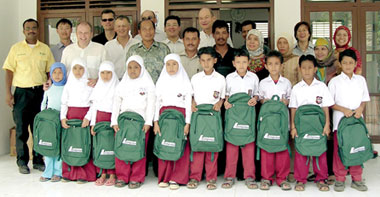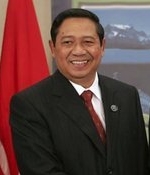SOUTHEAST ASIA
Choosing to Reuse
 |
| Each house Lafarge is helping to build in Indonesia comes complete with running water and electricity, bathroom, bedroom, living room, kitchen and patio. The reconstruction program is overseen by Lafarge in partnership with Dompet Dhuafa Republika, which handles relations with local communities, Habitat for Humanity and Atlas Logistique, a construction site management firm. Photos courtesy Lafarge |
"Our biggest challenge is to effectively combine old and new equipment," said H.S. Ramesh, technical director of Lafarge's P.T. Semen Andalas industrial site. "We will engineer the new plant ourselves and take direct charge of reconditioning the equipment." The plant will have annual capacity of 1.6 million metric tons, or twice the estimated market in North Sumatra province.
Internal corporate support is coming from Lafarge's plant in Langkawi, Malaysia, just below the Thai border and just below the outstretched finger of Aceh that absorbed the blow from the tsunami.
The company also used a temporary cement plant barge, located on a floating terminal nicknamed "Glory" that was initially moored in Lhokseumawe and then moved to the devastated port in Lhok Nga, close to the plant site.
The first phase of 275 homes was expected to be complete by summer 2006 at a cost of approximately $2 million. But a progress report issued by Lafarge in December 2005 said weather and, ironically, materials
 |
| Lafarge Group employees have donated some $36,000 toward school refurbishment and supplies, including school bags and supplies for 2,500 children purchased in partnership with the Jakarta International School and the American Women's Association of Jakarta. |
"We do not need food or shelter, which would only turn us into welfare recipients," said Ampon Cip, head of the Lhok Nga community, in the Lafarge progress report. "We need a way to make a living, and the tools to ply a trade. We need to be actively employed to stop thinking about our suffering, but also — and above all — to recreate our local economic life.
 |
| Dr. Susilo Bambang Yudhoyono, president of the Republic of Indonesia.
White House photo by Eric Draper |
So is decreasing political turmoil: In the literal wake of the tsunami, rebels in Aceh seeking independence from Indonesia and Indonesian government officials signed a peace accord including self-government provisions in August 2005. An improved development climate is also high on the agenda of Dr. Susilo Bambang Yudhoyono, president of the Republic of Indonesia, who said in a September 2005 speech at Columbia University's World Leaders Forum, "We know what it takes to attain prosperity, and that is the continuing refinement of our institutions, and human development in an environment of democracy."
He has also pledged to reduce red tape and increase foreign direct investment (FDI), as he seeks to reduce unemployment among Indonesia's 215 million people. Early results are promising: During the first 11 months of 2005, the value of some 311 FDI projects was $3.63 billion, up from $2.8 billion from 143 projects during the same period in 2004.

